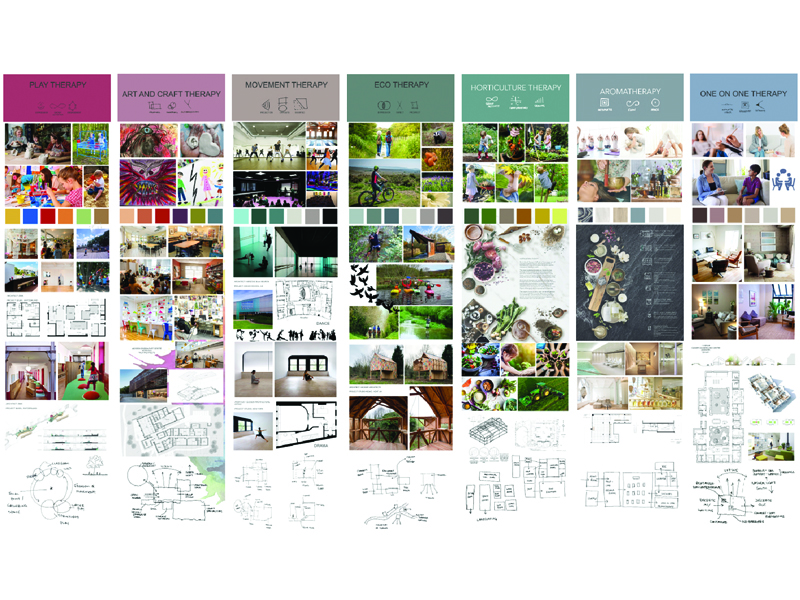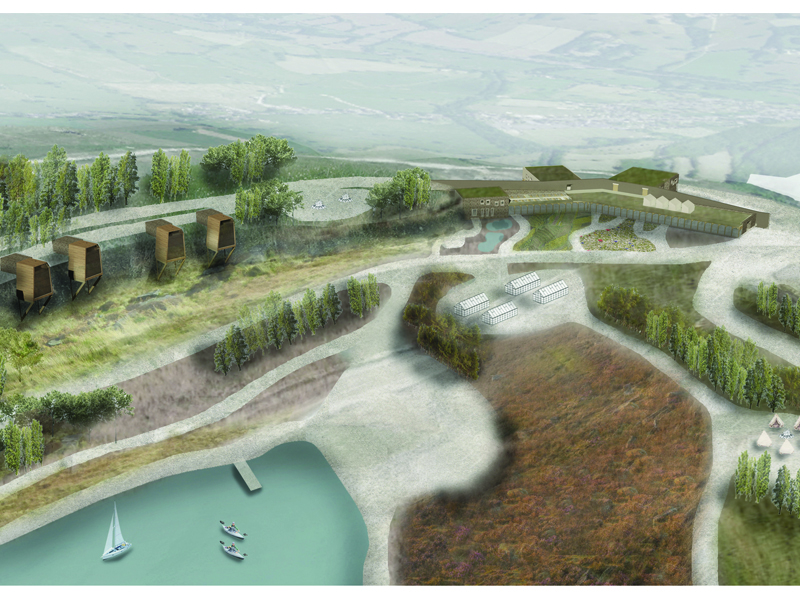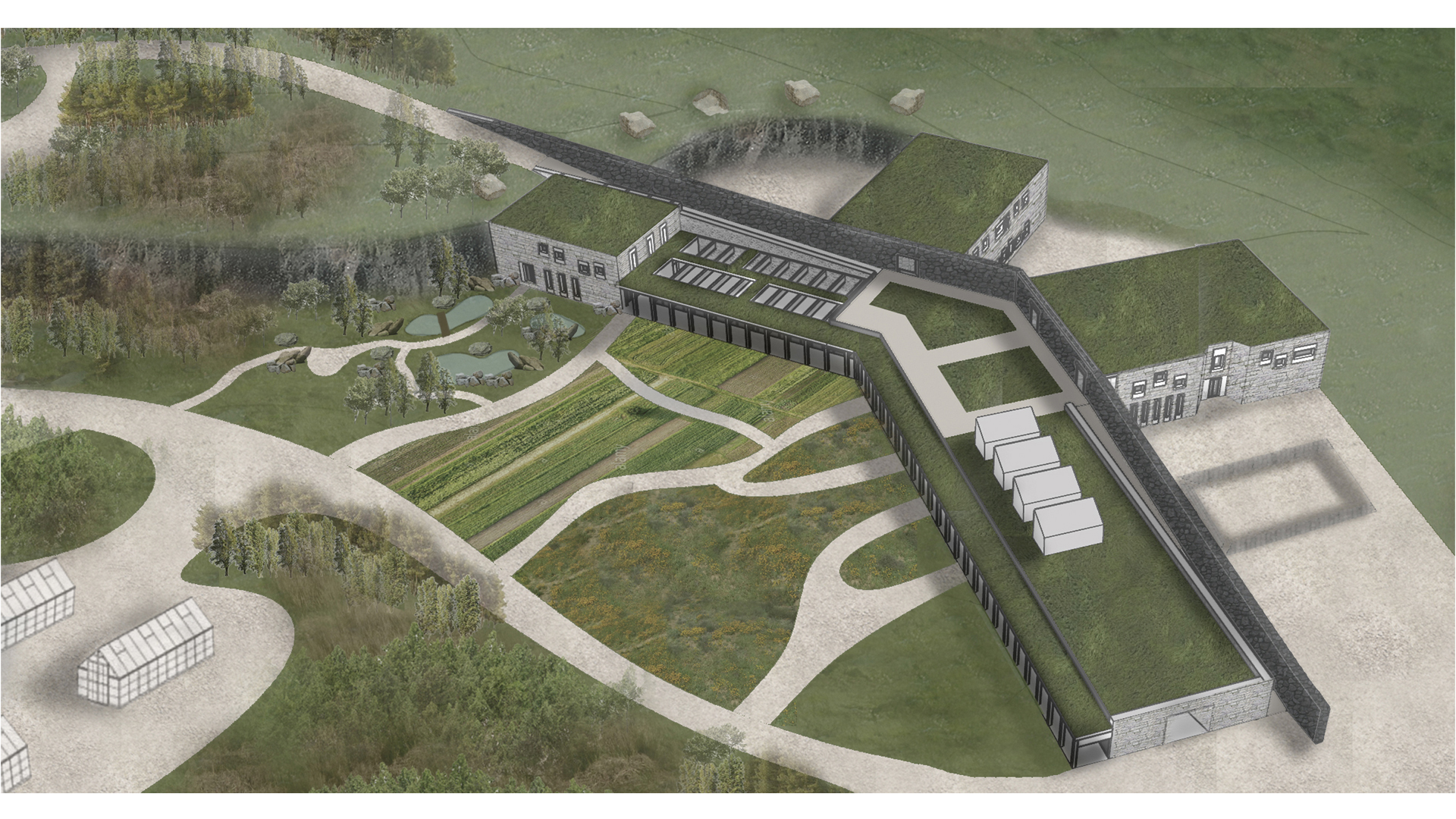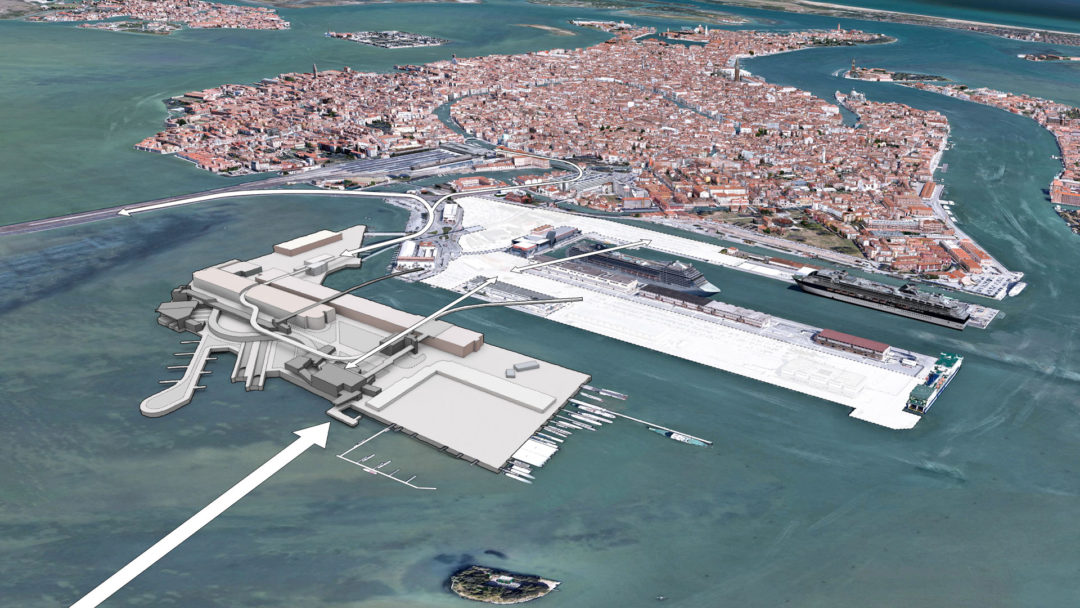Adventure Therapy centre
The Adventure Therapy centre challenges traditional societal responses to providing care for children who have suffered traumatic life events such as bereavement, family break ups and ill health, by exploring the role that rural environments and access to nature can play in healing. The mental health of children is often overlooked, underfunded, and under resourced, despite its accounting for several prolonged health issues leading into adulthood.
This thesis integrates Kaplan’s Attention Restoration Theory; “spending time in nature, by watching a sunset, gazing at the ocean or mountains, sitting in a park, escaping to the countryside or a nature retreat, or even just spending a few minutes to stare out the window, provides us with the opportunity to rest, reflect, and restore our very selves.”1 by prioritising spaces for nature to occur within and around Architecture. Our aim is to design spaces where tailored and shared experiences can occur assisted by eco-play to provide an opportunity for children to seek comfort, strength and solace in nature.
This has been achieved through the design of an all year-round activity and therapy centre for children aged 10-18 within the heart of the Peak District National Park. The centre forms part of an extensive restoration plan for Hope Quarry and has been designed to re-establish connections between the neighbouring villages of Castleton and Bradwell. Our response has not been to prescribe a “one size fits all” solution, but to develop a sequence of calm and inviting space for individuals and groups to explore self-expression and healing with nature. The building design strategy focuses on three key elements.
1) A central “spine wall” to anchor the building to the site and provide a route of transition between the ground plane and cliff edge
2) Individual stone pavilions constructed using site specific Limestone to house private creative therapy spaces
3) A light-weight timber frame that hangs from the spine wall. This element embraces nature and provides a seamless transition between inside and outside.
The building provides private social spaces to encourage children from all backgrounds to form emotional connections within a safe and supportive environment, whilst also providing a public function to the building to engage the local community and seasonal tourists to support an infrastructure that promotes expression and self-connection. This additional communal support will help to reverse stigmas associated with childhood mental health traumas and underpin the development of future attitudes towards trauma in society.







CONTACT DETAILS:
RYAN WENHAM
07757342079
Portfolio
r.wenham@student.liverpool.ac.uk
ELIZABETH ANDERSON
07595505321
e.anderson5@student.liverpool.ac.uk
RACHEL KNIGHT
07805471778
r.knight2@student.liverpool.ac.uk




